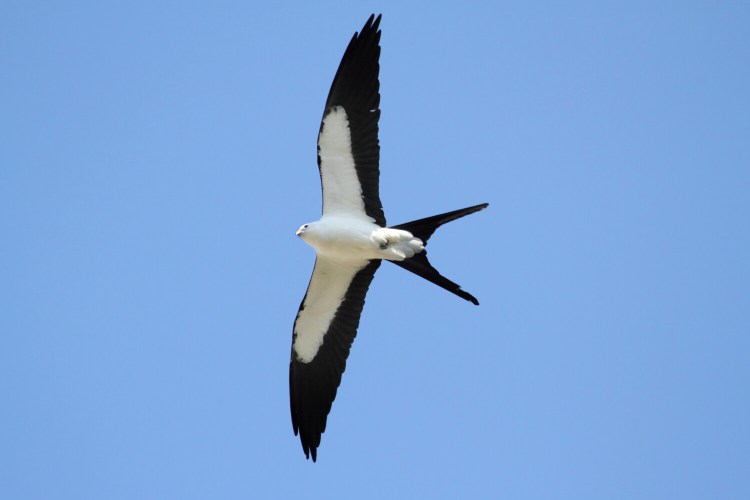Migration is a phenomenon in which members of a species move seasonally and predictably from one region to another.
The fall migration is a time of loss for us. We bid farewell to our eastern phoebes as they head to Florida, our ruby-throated hummingbirds as they depart for Costa Rica, and even monarch butterflies as they begin to wing their way to the highlands of Mexico.
Of course, fall does offer us the chance to see birds that neither breed nor winter in Maine. They delight us as they pass through Maine en route to wintering areas to the south. Common passage migrants include many species of sandpipers and plovers, and white-crowned sparrows.
Two common passage migrants in the fall are the Cape May warbler and fox sparrow. Most of their breeding ranges are to the north of us, so it’s easier to find a Cape May warbler or fox sparrow during the fall than during the nesting season.
We have three other types of fall movements in birds that don’t qualify as true migrations. First, we have birds that are storm-tossed. Land birds are good at hunkering down in hurricanes and tropical storms. Most vagrants displaced by storms are seabirds, hawks and falcons.
Some species undergo post-breeding dispersal in the late summer and fall, typically involving moving north. Herons, egrets and ospreys commonly engage in these movements. The explanation for these movements in the “wrong” direction are unclear. Some ornithologists suggest these birds are prospecting for new and better nesting areas for future years. It’s clear these movements are hard-wired in them because this dispersal occurs predictably. Eventually, these birds do head south for the winter.
The final type of movement is called reverse migration and represents an error in navigation. Some birds have their internal compass reversed, so north seems to be south. Reverse migration may explain the appearance of southern or western birds in the Northeast, far from their typical range.
We have had remarkable bird sightings in Maine this fall that can’t be explained by migration. Let’s review some of them and try to understand why they appeared in Maine.
On Sept. 15, a swallow-tailed kite was seen in Dennysville in eastern Washington County. This unmistakable bird, mostly white with black on the back, wings and the forked tail, was gone the following day, but it was apparently seen as early as Sept. 7. The date corresponds with the remnants of Hurricane Dorian, which hit Washington County harder than the rest of Maine. There are only six accepted state records of this species, mostly from southern Maine.
In the past three weeks, small numbers of black skimmers have been reported at several coastal locations as far north as the Schoodic Peninsula. They do nest as far north as Massachusetts. Are these post-breeding dispersers? The fact that so many have appeared in Maine would seem to rule out reverse migration as an explanation, and we experienced no strong storms in the past three weeks. The number of fall records is far greater than in other autumns in my memory.
Royal terns, Caspian terns and even a gull-billed tern have appeared widely as well, often in loose association with the black skimmers. Post-breeding dispersal seems the likeliest explanation, but we can’t know for sure.
And now for something completely different. A Townsend’s solitaire appeared Oct. 5 on Monhegan Island. This species belongs to the thrush family and breeds in western North America.
Since land birds aren’t typically storm-tossed, post-breeding dispersal in a big way or reverse migration are possible explanations.
Fall birding in Maine. You gotta love it.
Herb Wilson teaches ornithology and other biology courses at Colby College. He welcomes reader comments and questions at
whwilson@colby.edu
Send questions/comments to the editors.



Comments are no longer available on this story